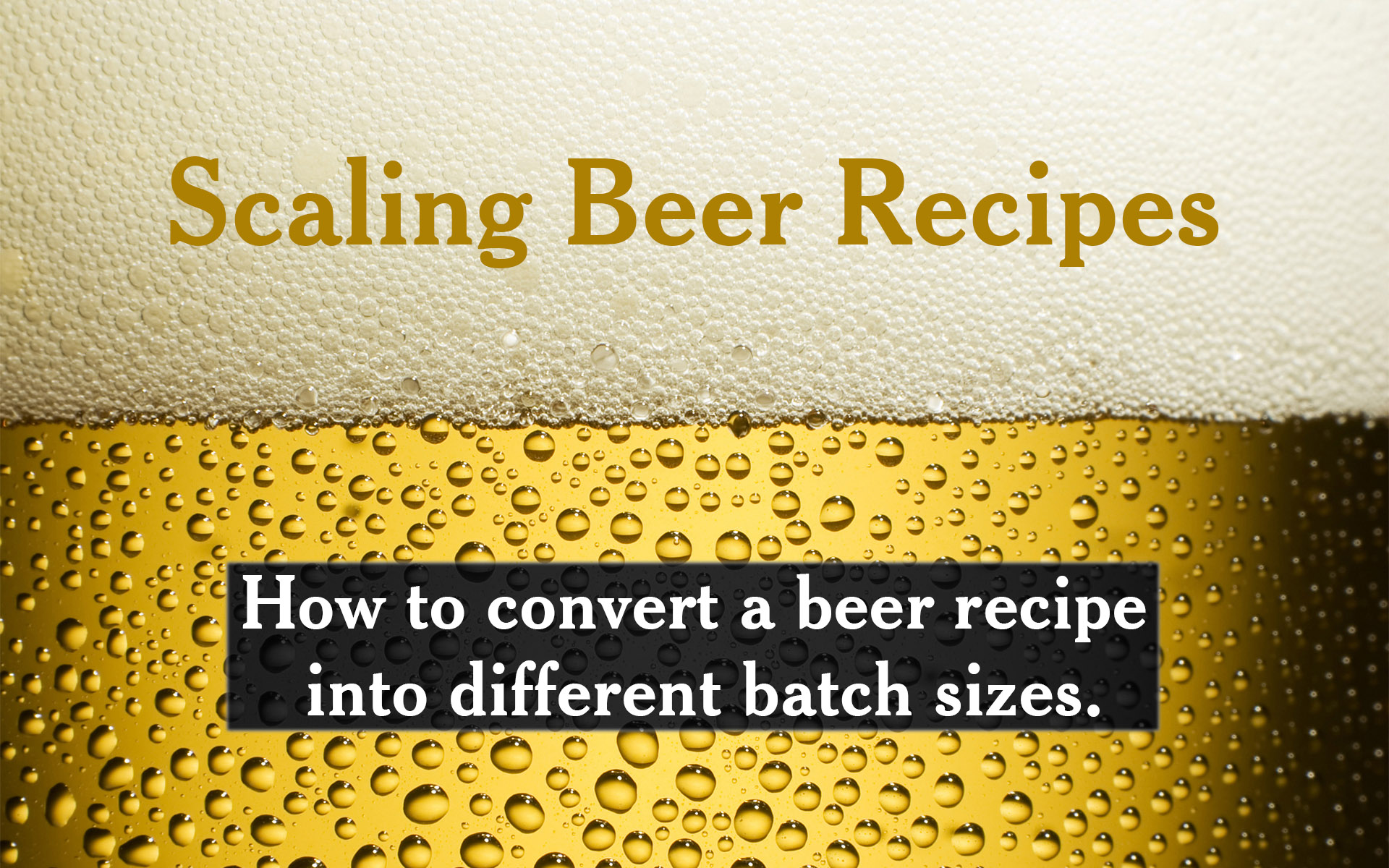Most homebrew recipes are typically portioned in five gallon batches. However, 1 gallon beer recipes are coming more in demand as there is been an increase in smaller batches. Brewing in a 5 gallon batch isn’t for everyone, and there are many reasons to brew beer in smaller batches.
Sometimes it’s out of necessity because of space, and other times it’s to test a new recipe. All recipes are scalable, although, there may be some trial and error. So if you find a recipe you want to try out you can scale that recipe to any size.
If you are eager to get started, Beer Craftr has a great resource with lots of 1 gallon beer recipes that are ready to go!
Scaling for 1 Gallon Beer Recipes
There are so many factors changing when scaling recipes that different size batches may not turn out the same. This is even with the recipes scaled linearly. However, the methodology for for making 1 gallon beer recipes would be the same as it would be for larger batch sizes. Almost all of the ingredients should be scaled linearly. We will go into this a little bit more throughout the article.
To scale a recipe down you should:
- Multiply the amount of each ingredient by your desired batch size.
- Divide by the batch size in the original recipe.
For example, if you want to convert a 5 gallon recipe to a 1 gallon recipe and the recipe called for 3.3 lbs. dry malt syrup you would calculate:
- 3.3 lbs x 1 = 3.3 lbs
- 3.3 lbs / 5 = 0.66 lbs
Using the same example, if you wanted to convert a 5 gallon recipe to a 3 gallon recipe you would calculate:
- 3.3 lbs x 3 = 9.9 lbs
- 9.9 lbs / 5 = 1.98 lbs
Other Considerations When Scaling Beer Recipes
Hop Utilization
Although most of the ingredients will scale well the batch size will impact the hop utilization as the recipe is scaled. In principle, hops don’t scale linearly but it’s almost linear. It depends on the brew kettle you’re using. Hop utilization generally decreases as the boil volume decreases. Because of this, yo will likely need to increase the amount of hops after scaling the recipe. Especially, if you are brewing a hop oriented beer such as an IPA. A more vigorous boil will be achieved when brewing a smaller volume which would have an effect on the hop utilization.
The Pot and the Boil
The boil time does not get scaled! Just to make the clear at the beginning. But if you’re using an oversize kettle to boil, your extract/wort will have a larger proportional surface area. This will result in more boiloff. This side effect can be avoided by using an appropriately scaled pot to your batch size. The density and gravity of the boil is what matters. Scaling the recipes correctly should be the same gravity. So the utilization should be same with 1 gallon beer recipes and 5 gallon beer recipes.
If you are boiling on a system that is set up for larger batches you may need to adjust the heat source so you don’t apply too much heat for a small amount of liquid. The chances of added carmelization increases which will affect the flavor.
Fermenting
If you planned on using your regular fermenters (buckets and carboys) that were designed for larger batches you will end up with a lot of headspace. Although this could be a non-issue if you move the fermenter a lot there is a chance that oxygen can be let in and diffuse into the beer. You might get some oxidation or acetobacter growth. Consider getting smaller fermenters.
The Mash
Because there is smaller mash mass when brewing beer in small batches heat loss will happen more quickly. Consider using a smaller container or working on the stove to better control the heat. Since the mash mass is lower it is easier to overheat the mash to the point you denature enzymes and can’t convert the starches.
Unlike a large batch of five gallons or more a small batch mash can heat very quickly while you are not looking at the thermometer. So you need to watch this closely. If the heat source is active to try to maintain a specific temperature it’s easy for the temperature to rise or fall as the temperature can be difficult to regulate.
Equipment you might need
A Sensitive Scale
A A Refractometer
Since we are working with small quantities even pulling enough wort to float your hydrometer can put a strain on your yield. A Conclusion
Unfortunately, there is no rule of thumb when scaling large recipes to 1 gallon beer recipes. With so many variables a 5 gallon batch may not be exactly the same as a one gallon batch. But that doesn’t mean it wouldn’t just take some minor tweaking to math a one gallon recipe to a five gallon recipe.

